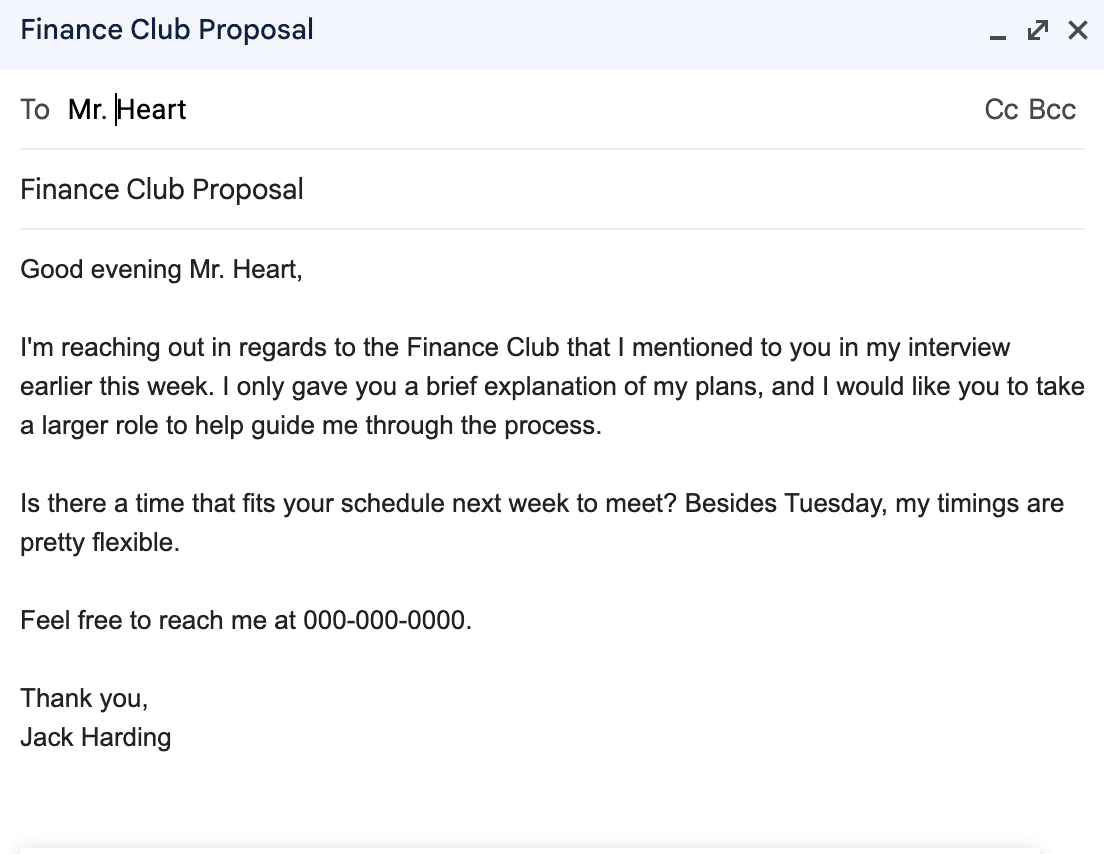Professional Emailing

Professional Emailing
Being able to compose a professional, well written email is often overlooked.
Being able to do so establishes credibility and professionalism, sets the stage for effective communication, and helps build lasting relationships.
Professional Emailing in a Nutshell
Have a short, but indicative subject. For example, “Club Proposal - John Smith.” This helps the receiver stay organized and tie your name to the subject.
Greetings: Keep it simple. “Good afternoon Mr. Smith,” works, and “Mr. Smith, …” works just as well.
Of course, the body of the email will vary from person to person. However, here are a few rules to follow:
Be concise, clear, and straight forward - oftentimes, we try to use big words to sophisticate our writing skills, but end up going in circles.
Use small paragraphs to introduce new topics. Again, this will help the reader stay engaged, without losing them along the way.
End the email with a warm final remark. Here are some conventional ones:
Regards, (new line) John Smith
Thank you for your time, (new line) John Smith
I appreciate your consideration, (new line) John Smith
Looking forward to your response, (new line) John Smith
Finally, be sure to include your personal contact information below. For example, your phone number and/or company name and position.
Essentially, the main goal in writing an email is to be effective in your word use. People value their time, and would rather read a short, concise email than one with 400 words that delivers the same message. Don’t forget to use high level vocabulary when appropriate! Your email could look something like this:
